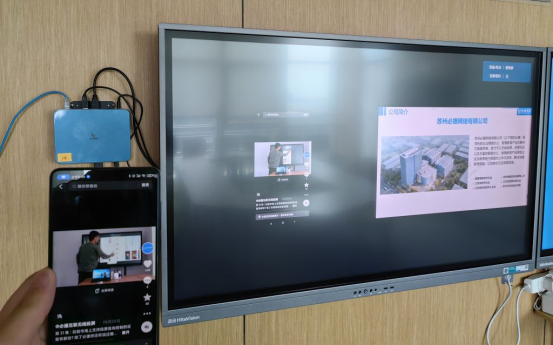How does Miracast achieve wireless screen mirroring? Specific operating steps
With the rapid development of technology, wireless screen projection technology has penetrated into our daily lives. Miracast, as a revolutionary wireless projection technology, has become a leader in the field of wireless projection due to its high efficiency, convenience, and high-definition characteristics. Below, we will delve into how Miracast achieves wireless screen projection and the technical principles behind it.
Miracast is a wireless projection standard launched by the Wi Fi Alliance. It is based on Wi Fi Direct technology and allows users to wirelessly transfer content from mobile phones, tablets, laptops, and other devices to other display devices, such as TVs, projectors, etc. The emergence of this technology has completely changed the complexity and inconvenience of traditional wired screen projection, making wireless screen projection possible.

The working principle of Miracast
The core technology of Miracast is Wi Fi Direct. This is a technology that allows devices to establish wireless connections directly between each other without the need for routers or hotspots for relay. When both devices support Wi Fi Direct, they can form a peer-to-peer communication network through mutual discovery and connection.
During Miracast’s screen casting process, the sending device will compress and encode the displayed content, and then send it to the receiving device via Wi Fi Direct network. After receiving the signal, the receiving device will decode it and display it. During this process, data transmission and processing are completed in a high-speed Wi Fi environment, ensuring the smoothness and clarity of the image.

The steps for Miracast to implement wireless screen mirroring are as follows:
- Ensure that your phone and TV are connected to the same WiFi.
- Turn on the “Wireless Screen Projection” function in the TV, you can find and open it in “My Applications”, select “Miracast”, and the status of waiting for connection will be displayed.
- Pull down the notification panel from the phone status bar, or follow the steps of “Settings” – “More Connections” – “Phone Screen Projection” to turn on “Wireless Screen Projection” and “Bluetooth” to search for TV or set-top box devices.
- Select the corresponding TV device name in the device list, wait for the system to connect, and the phone screen will be displayed on the TV. The operations on the phone will be synchronized to the TV. When the “auto rotate screen” function is enabled on the phone, you can watch videos in full screen on the TV.
It should be noted that if the Miracast switch is not turned on on on the smart TV or network set-top box, “wireless screen mirroring” may execute another protocol called DLNA, in which case only media content such as images, music, and videos can be projected.
The above steps are for reference only. It is recommended to consult the official websites of major mobile phone and TV manufacturers for more accurate information.
Miracast’s application scenarios
- Home entertainment: In the home environment, users can place movies, games, and other content on their phones or tablets on the TV, enjoying the stunning experience brought by the large screen.
- Business Meeting: In the conference room, users can wirelessly display PPTs, documents, and other content to others, facilitating and facilitating business communication and exchange.
- Education and training: Teachers can real-time display courseware, videos, and other content on large screens, making it convenient for students to watch and learn.
- Smart Home: Through Miracast, users can place content from their phones on smart TVs or speakers, achieving a more intelligent home experience.
In summary, Miracast, as an advanced wireless screen projection technology, brings users a brand new visual sharing experience with its high efficiency, convenience, and high-definition characteristics. Miracast plays an important role in fields such as family, business, and education. With the continuous advancement of technology and the expansion of application scenarios, we have reason to believe that Miracast will play a more important role in the future.